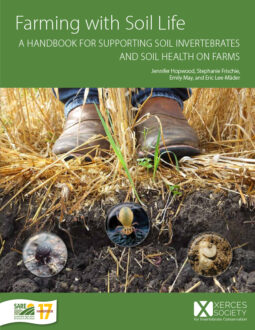SOIL MICROFAUNA are tiny creatures, less than 0.006”(0.16 mm). Microfauna inhabit water films and studying them often requires microbiological techniques, including preparing and looking at specimens under magnification.
Protozoans
KINGDOM: Protozoa* PHYLA: Amoebozoa, Cercozoa, Ciliophora
*The classification of different protozoan groups is in constant fluctuation as scientists better understand how these organisms are related to each other and to other groups. Currently the groups included in the kingdom Protozoa may not all share a common ancestor. Some protozoans are more closely related to (but do not belong in) the animal kingdom, while others are more closely related to the plant or fungus kingdom.
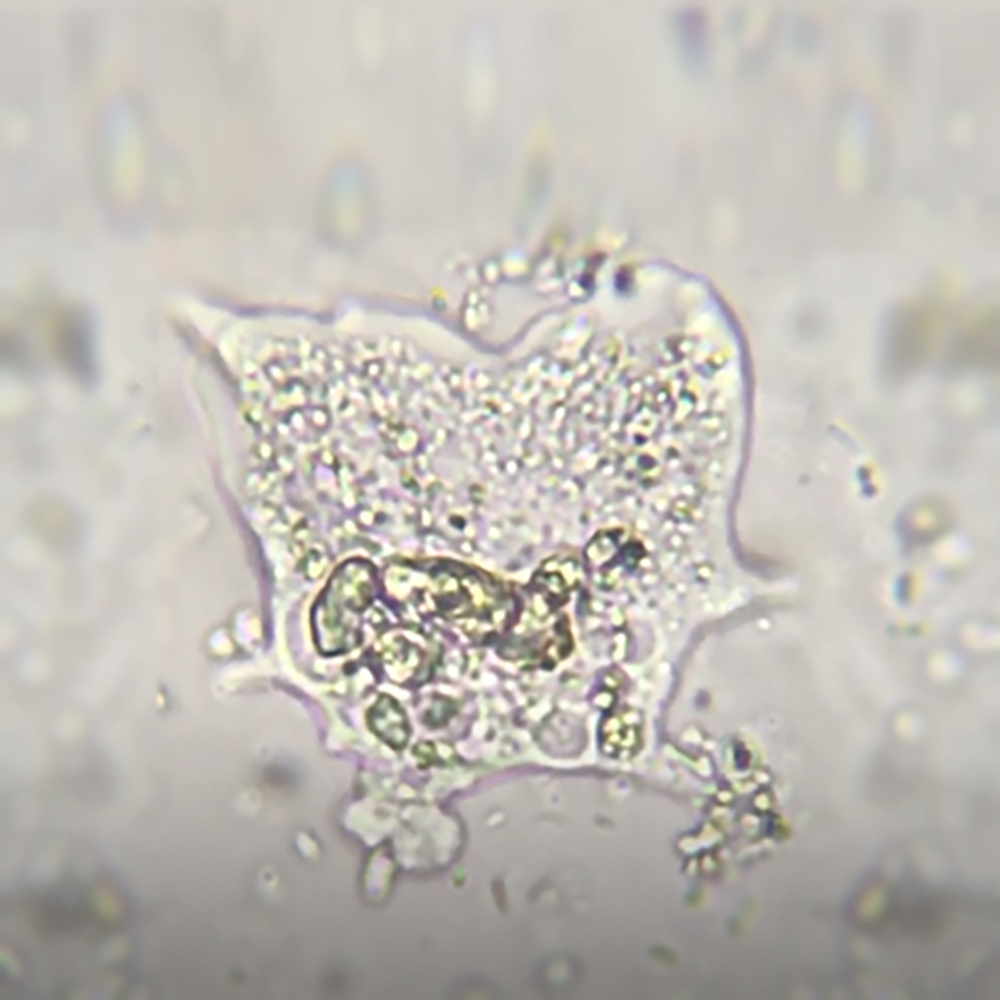
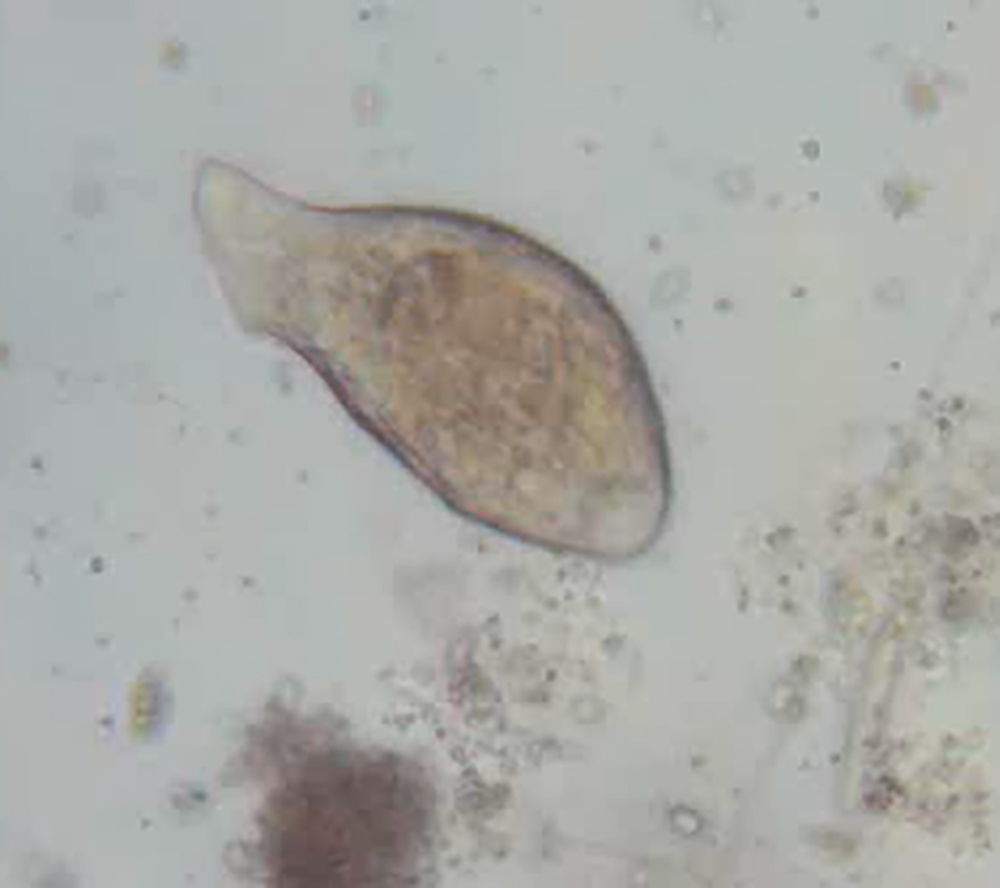
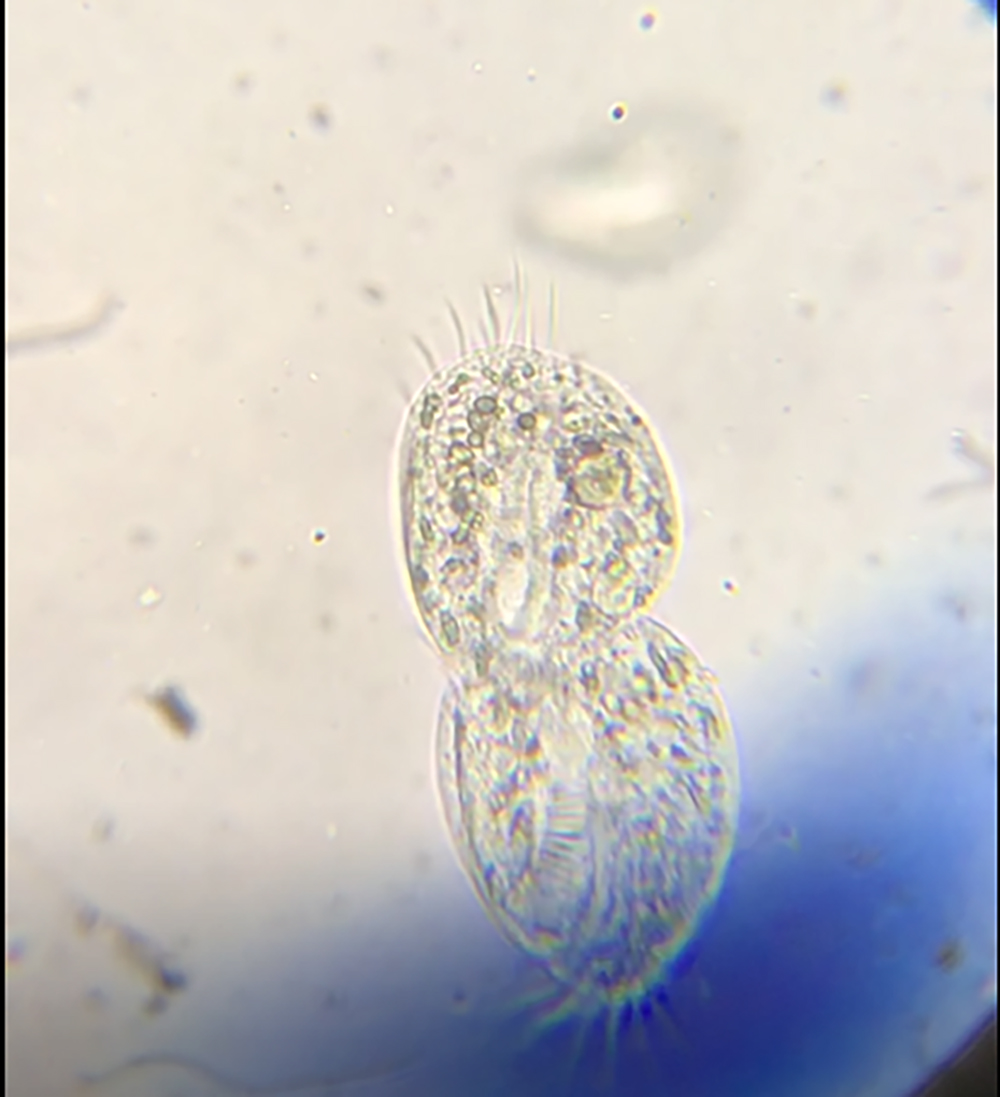
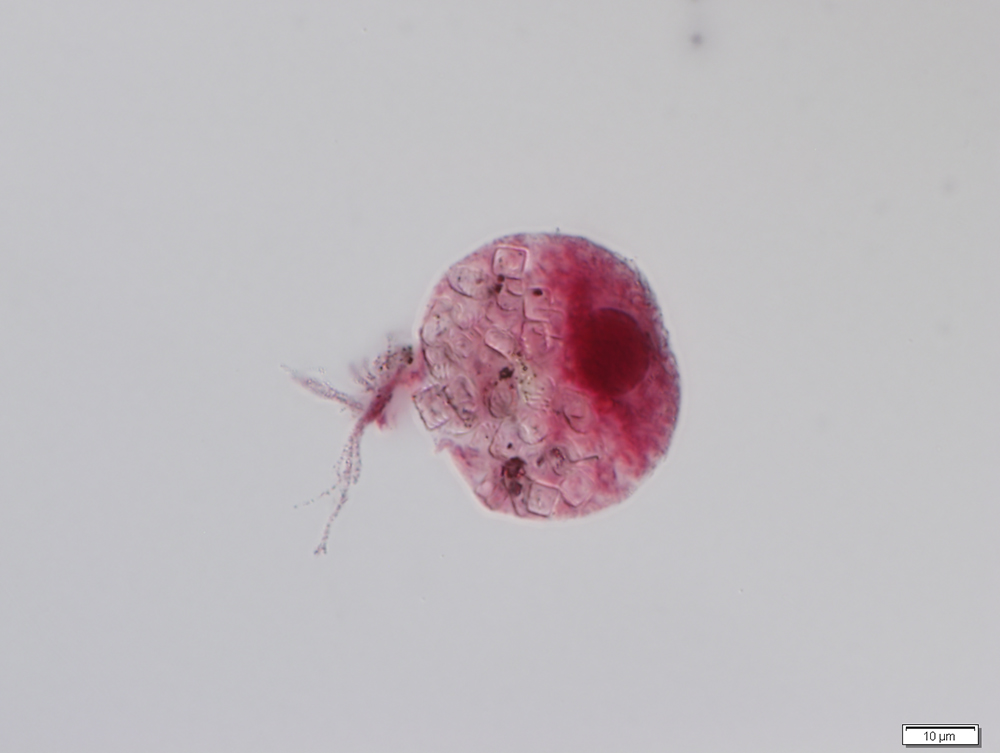
SIZE: 0.00004–0.11" (1 µm–3 mm).
ECOLOGICAL ROLE: As predators, decomposers and consumers of bacteria, protozoans play a significant role in nutrient cycling.
DESCRIPTION: These single-celled organisms are diverse in shape and size. Some are colonial and live in clusters, resembling multicellular organisms. Amoebae (Amoebozoa) have pseudopods—temporary projections filled with cytoplasm that they can extend and retract to move into soil crevices and alter their shape. Testate amoebae (Amoebozoa) have a shell-like test made of organic, siliceous or calcareous materials depending on the species that partially encloses the cell. Ciliate protozoans (Ciliophora) have cilia, structures that help them move or sense their environment. Flagellate protozoans (Cercozoa) have one or more whiplike organs that propel them.
WHERE THEY ARE FOUND: Protozoans are found within water films in and on soil and other moist surfaces. Although they are most common in the upper few centimeters of soil among plant roots, some can be found at depths of more than 219 yd. (200 m). Amoebae in particular are able to fit into very small pores or soil cavities.
WHAT THEY EAT: Protozoans primarily feed on bacteria, though larger protozoans can also feed on algae, fungus or small organic debris, releasing nutrients that stimulate plant growth.
LIFE CYCLE: Protozoans can reproduce asexually by duplicating their body and splitting themselves into two organisms, but many species can also exchange genetic material through conjugation. When soils dry out, protozoans become cysts—inactive states in which they are in suspended animation until more moisture arrives.
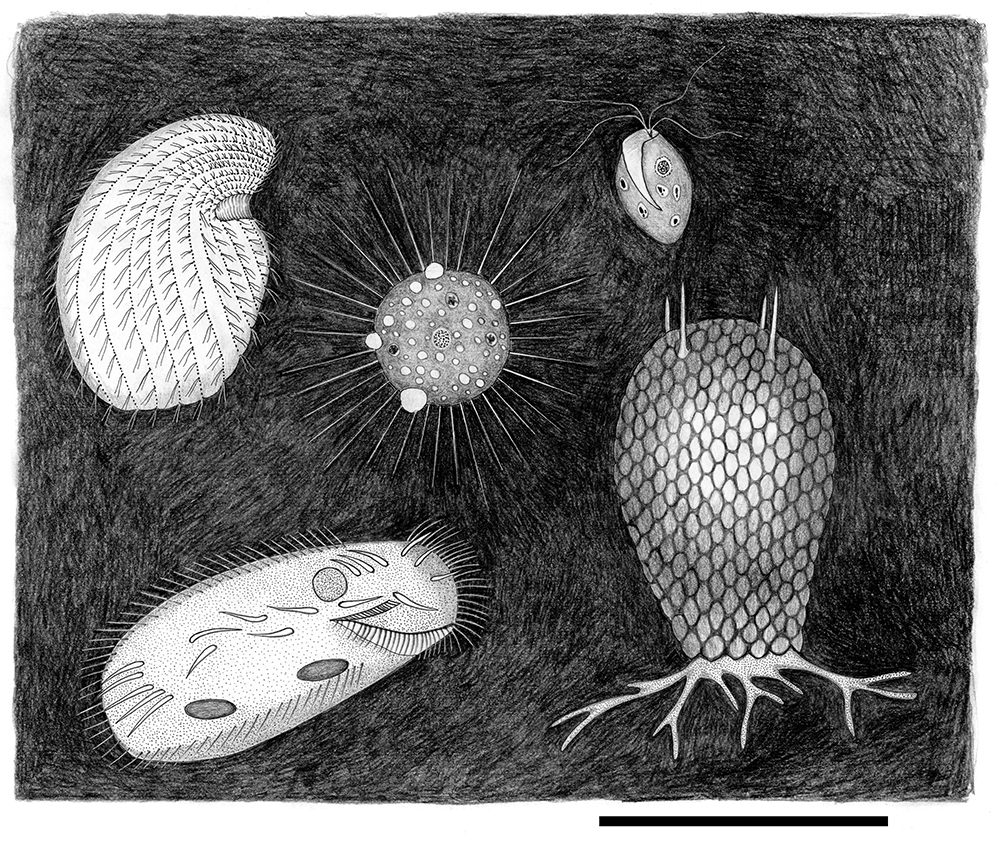
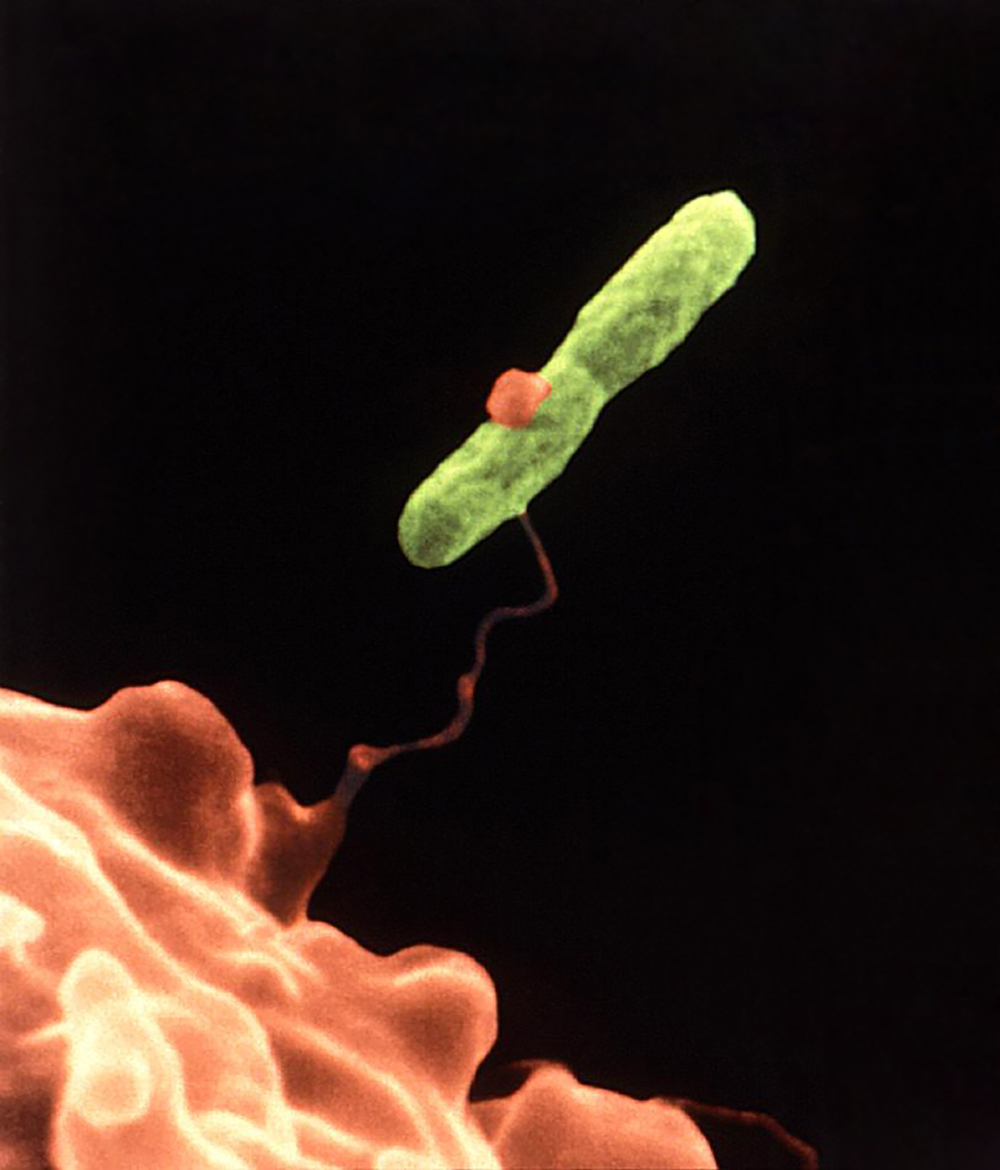
APPROX. NUMBER OF KNOWN SPECIES: 3,000 Amoebozoa, 100–1,000+ Cercozoa (many undescribed) and 1,500 Ciliophora worldwide.
RELATIVE ABUNDANCE: Some estimates suggest that 10 billion protozoans can live in the top 6" (15.24 cm) of a square yard of meadow. Protozoans with flagella are the most common overall. Amoebae without shells (pseudopods) are more common in wet soils, while testate amoebae are more common in forest soil than in plowed fields.
NOTES OF INTEREST:
- Protozoans are the primary consumers of bacteria in soil.
- Protozoans are sensitive to environmental changes, and changes in their distribution and activity relate to changes in soil health.
- Some groups of organisms were once thought to be fungi or plants and are now considered protists (at least for the time being). These include brown algae found in the soil and slime and water molds.
- Brown algae in the soil have lost the ability to photosynthesize; instead, they absorb nutrients by extending filaments into decomposing tissues or living plant material.
- The oomycete protist Phytophthora infestans was the pathogen that contributed to the Irish potato famine in the 1840s.
- One method for counting protozoans: use a microscope to count protozoans directly from soil samples in a suspension in small wells or in a petri dish.
This material is based upon work that is supported by the National Institute of Food and Agriculture, U.S. Department of Agriculture through the Sustainable Agriculture Research and Education (SARE) program. Any opinions, findings, conclusions, or recommendations expressed in this publication are those of the author(s) and should not be construed to represent any official USDA or U.S. Government determination or policy.
